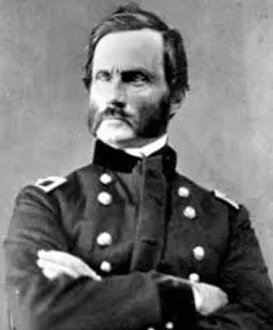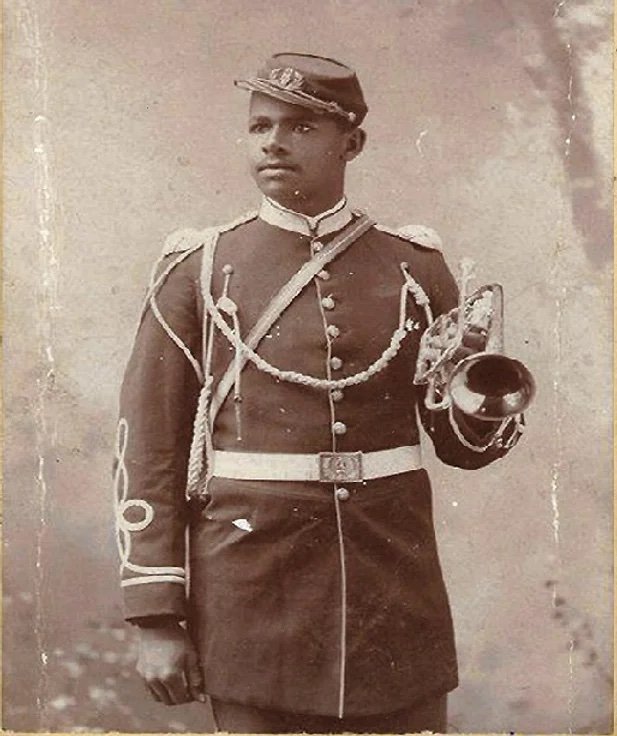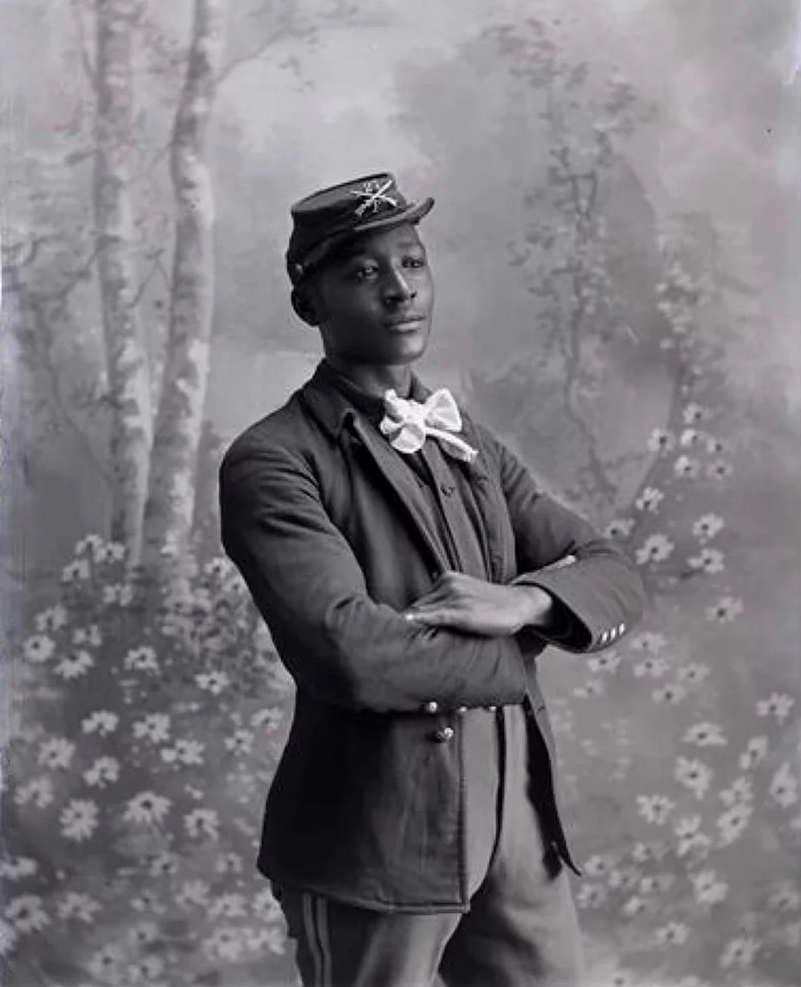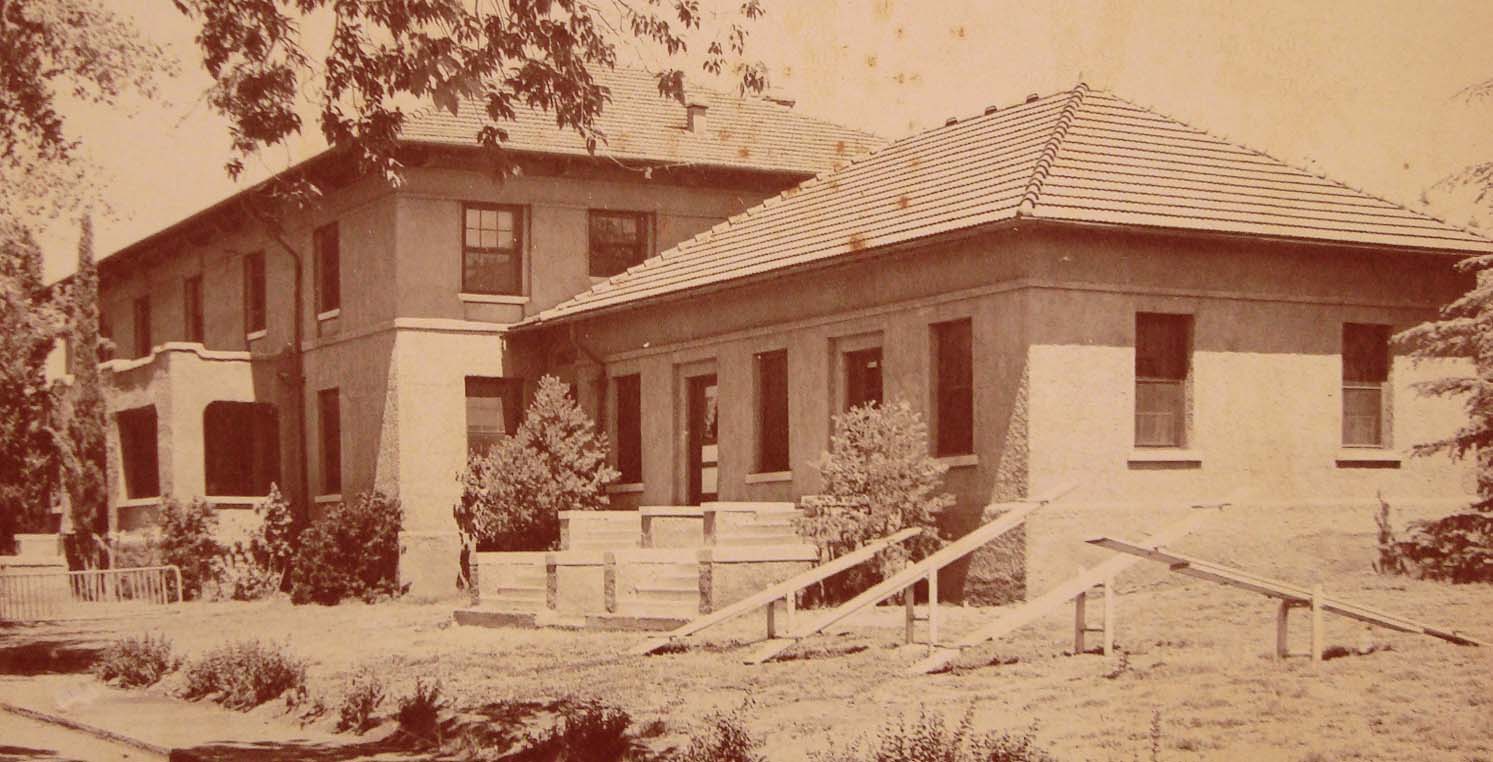On August 21, 1866 Company B of the 125th Colored Infantry regiment arrived at a spot that their commanding officer First Lieutenant James M. Kerr described as “beautifully situated on the southern slope of the Pinos Altos Mountains, with wood, water and [livestock] feed in abundance”. They christened the spot “Fort Bayard”, in honor of Brigadier General George D. Bayard, who had died while serving to preserve the Union at Fredericksburg, Virginia in 1862.
The 125th, under the command of white officers, was composed of African American volunteers, many of whom had once been held in slavery. Their regiment had been formed in Lexington, Kentucky, and they had been ordered to New Mexico in the spring of 1866. While other companies of the regiment had been sent to other parts of the Territory, it was the mission of Company B to establish a new fort that would provide a permanent Army presence in the mineral rich area of southwestern New Mexico. The native Apache people, who had inhabited the region for centuries, were offering increasing resistance to settlers and travelers who they believed were stealing and ruining their home grounds. Fort Bayard was established to protect those settlers and travelers, and eventually to enforce policies toward the natives that would confine them to assigned reservations.
By the time the soldiers arrived, they had marched several hundred miles from Fort Union, far to the north. They were quickly put to work building the first structures at the fort. The military post they established would remain an active military base until 1899, when its mission would be drastically changed. In that year, Fort Bayard would become home to the first Army Tuberculosis Hospital, a role it would keep until 1920.
In 1920 the Army turned the facility over to the U.S. Health Service, which in turn transferred it to management by the Veterans Bureau (later renamed the Veterans Administration) in 1922. VA Hospital #55 remained in service until 1964 when it was sold to the State of New Mexico, who still owns the property today. In 2004, Fort Bayard was declared a National Historic Landmark.

General George D. Bayard
General Bayard was born in Seneca Falls, NY in 1835. His pioneering family moved to the Iowa Territory. Following graduation from West Point in 1856 as 2nd Lt of Cavalry, he returned to the west and fought against the Native Americans in Colorado and Kansas. With the onset of the Civil War, he returned east and was commissioned Colonel of the 1st Pennsylvania Cavalry and assigned to defend Washington. He served in many positions and because of his leadership skills was commissioned chief of the cavalry of the III Corps and became a Brigadier General in April of 1862. After the restructuring of the Army of the Potomac, he was promoted to cavalry commander. He was mortally wounded during the Battle of Fredericksburg two weeks before his birthday and wedding.
Buffalo Soldiers
United States Army 9th Cavalry
38th, 9th and 10th Cavalry Regiments
24th and 25th Infantry Regiments
125th U.S. Colored Troops
1866 Fort Bayard, New Mexico Territory
Walter Loving
Played in 24th infantry and at Fort Bayard circa 1890s. At the close of WWII, he was killed in the Philippines.


Private William Cobbs
This photo of William Cobbs (1874-1949) was taken in the Aultman Studio (Trinidad, Colo.) by Oliver E. Aultman (1867-1953) in 1894. The Aultman Studio register identifies both the date of the photograph and the subject pictured. Cobbs poses in his infantry uniform with his arms crossed in front of his chest. He wears a white bow tie and a forager’s cap. The metal insignia on his cap is composed of two crossed rifles with the number “24” and the letter “F” between them. A studio backdrop painted with flowers is visible behind him. Cobbs was a “buffalo soldier” in the 24th Infantry Regiment, stationed in New Mexico.
Cobbs served as a private with the U.S. Army 24th Infantry, Company F, who were mostly stationed in Fort Bayard, New Mexico during Cobbs’ years of enlistment. Known as one of the Buffalo Soldier regiments, the 24th was led by Colonel Zenas R. Bliss (1835-1900), and primarily went on scouting expeditions to help keep the peace in the southwest after the American Indian Wars. Cobbs stayed with the 24th from 1891 until he was discharged in 1896. During the Pullman Strike of 1894, the 24th was one the regiments sent to Trinidad to help subdue striking railroad workers. This brief stay in Trinidad would have given Cobbs the chance to have his portrait taken by the Aultman Studio.
